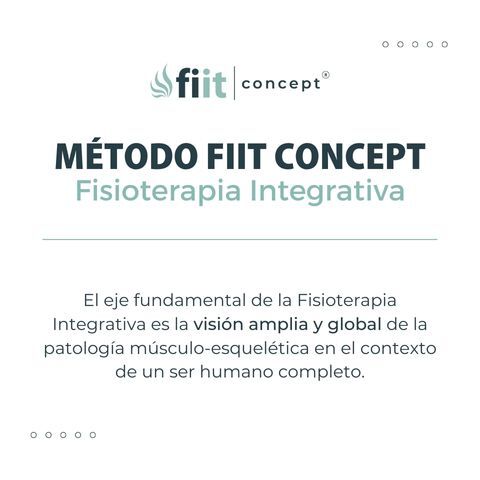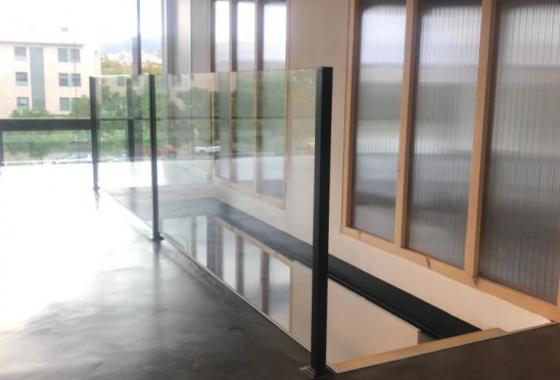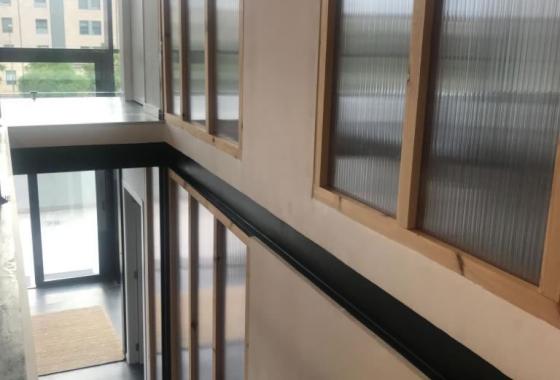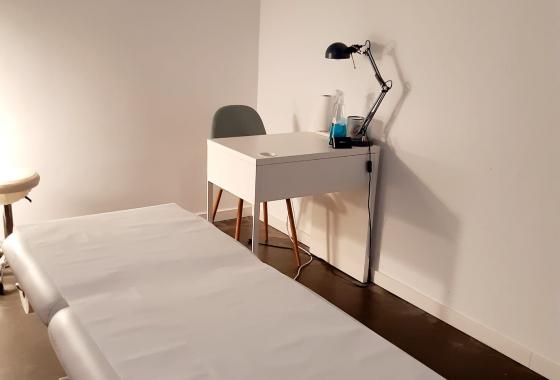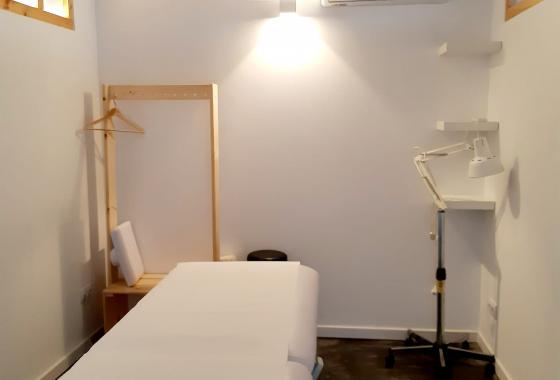In physiotherapy, musculoskeletal ultrasound is used not only in the diagnosis of different conditions in the musculoskeletal system and the monitoring of diseases or injuries but also in the application of physiotherapeutic techniques such as Intratissue percutaneous electrolysis (EPI). Next, you will learn more about this diagnostic method widely used in physical therapy:
What is musculoskeletal ultrasound and what does it consist of?
Musculoskeletal ultrasound is a common method of diagnosis and is often essential for optimal treatment in physical therapy. This study with the help of sound waves can make visible the state of the soft tissues of the musculoskeletal system (muscles, tendons, ligaments, bursae, etc.). In musculoskeletal ultrasound, a transducer emits high-frequency sound waves that are reflected and scattered off the surfaces of organs, to varying degrees, depending on the composition of the tissue. The time that elapses between transmission and return of sound waves is converted by the device into black and white image data that is reflected on a monitor.
How light or dark the image reflected on the monitor is will depend on the condition and type of tissue examined by the physical therapist. On the one hand, highly reflective fabrics, such as bones, become visible on the monitor in a white hue. On the other hand, liquids are not an obstacle for the generated sound waves, they just pass by, so they are shown in black on the screen. The soft parts of the musculoskeletal system are made up of water and tissues of different densities, so they show in gray tones.
Our physiotherapists at FisioClinics Palma are well educated in anatomy and interpretation of imaging studies such as ultrasound, allowing them to easily recognize and differentiate healthy from pathological topographic anatomy. With this knowledge, our physiotherapists manage to achieve a better result of the therapeutic intervention, since with ultrasound they can not only avoid erroneous diagnoses but also manage to carry out a timely follow-up that allows adapting the treatment to the recovery phase and the current characteristics of the patient.
What are the benefits of musculoskeletal ultrasound?
Musculoskeletal ultrasound is used in almost all medical disciplines, as this study allows a detailed examination of the characteristics and function of muscles, tendons, ligaments, bones, nerves, and blood vessels. In physiotherapy, it has become an indispensable study, since it allows us to rule out false positives in clinical tests that occur regularly during the initial physical evaluation. Some of the benefits and advantages that musculoskeletal ultrasound offers are:
- Low exam costs.
- Because it makes soft tissues visible, it offers considerable advantages over diagnostic imaging such as X-rays.
- Allows easier assessment on each side.
- Study without ionizing radiation, which can be used several times without harmful effects. This means that it can also be used in pregnant women and children.
- It allows a dynamic and real-time examination.
- Non-invasive method and therefore comfortable for the patient.
- High image resolution (especially with high-quality systems).
This imaging examination method is not only suitable for diagnosis, but also for monitoring the progress of physiotherapeutic treatment of any musculoskeletal condition. Also, in our FisioClinics Palma clinic, it is a useful method to control the correct application of therapeutic techniques with Intratissue percutaneous electrolysis (EPI).
What injuries can be seen with musculoskeletal ultrasound?
The extensive knowledge and vast experience that our physiotherapists at FisioClinics Palma have allowed them to make accurate assessments of a variety of pathologies that are affecting the functioning of the musculoskeletal system. Ultrasound makes visible the pathological changes in soft tissues (muscles, tendons, among others) frequently associated with injuries such as:
- Joint effusions and bruises.
- Signs of wear and tear on the joints (osteoarthritis, rheumatoid arthritis).
- Juxtaarticular lesions (bursitis, tendonitis, enthesopathy, cysts).
- Muscle fiber tears.
- Cysts or tumors in the muscles.
How do we apply musculoskeletal ultrasound at FisioClinics Palma?
One of our physiotherapists at FisioClinics Palma will ask you to discover the area to be assessed, so we recommend that you attend your physiotherapy appointment with comfortable or sports clothing, which allows you to comply with the physiotherapist's instructions. Once the area to be assessed has been discovered, the physiotherapist will apply a translucent gel to the area, which will feel a bit cold and which is necessary for the transducer to receive the waves well. The physical therapist starts the ultrasound by slowly moving the transducer over the area to be examined and examining the image that can be seen on the monitor, this procedure can last between 15 - 20 minutes. During the exam, he will explain to you what can be seen in the white, gray, and black images.
To finish the musculoskeletal ultrasound study, you will be given a towel to clean the remaining gel in the area examined; You do not have to worry if the gel makes contact with your clothes, this gel does not cause stains and disappears in a short time. According to the data collected with this study, your physiotherapist could perform other clinical tests to complete and immediately proceed to apply the most appropriate treatment for the case.
If you are looking for where to have a musculoskeletal ultrasound in Palma de Mallorca, make an appointment now! And it ensures an economical, comfortable and quick examination to perform, which will allow you to know the current state of muscles, tendons, ligaments, bursae, and joints in a short time, with the help of the physiotherapy experts at FisioClinics Palma.
 Physiotheraphy
Physiotheraphy Osteopathy
Osteopathy Massage
Massage Lymphatic
Lymphatic Group classes
Group classes Home
Home Baby
Baby



